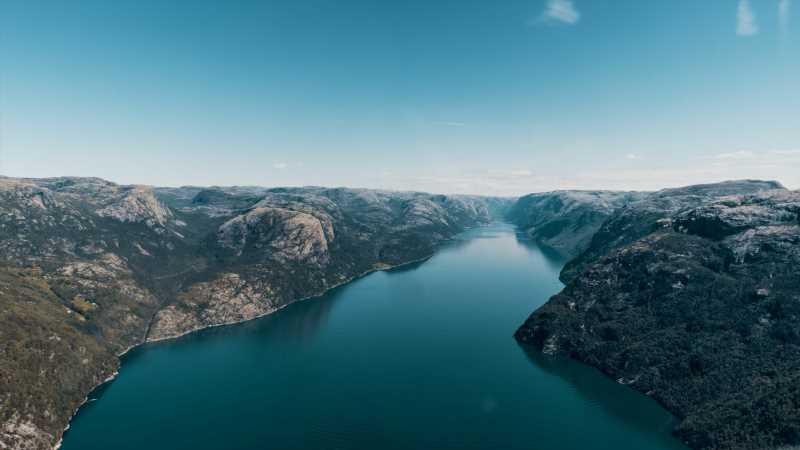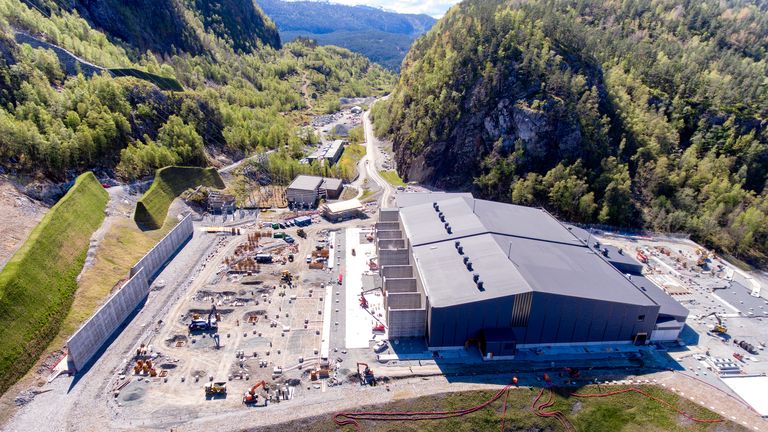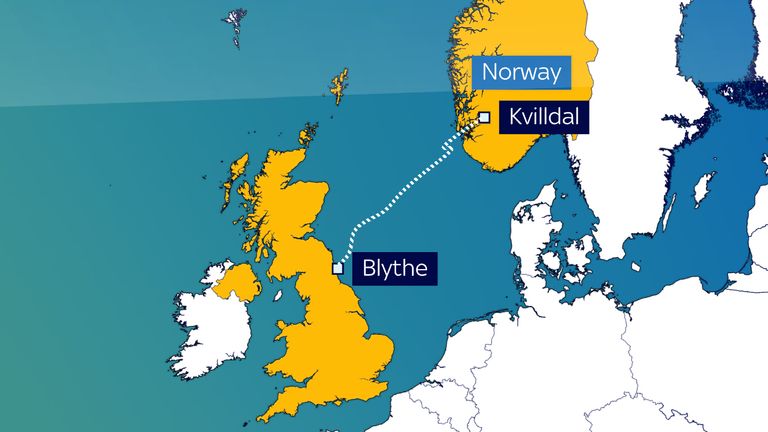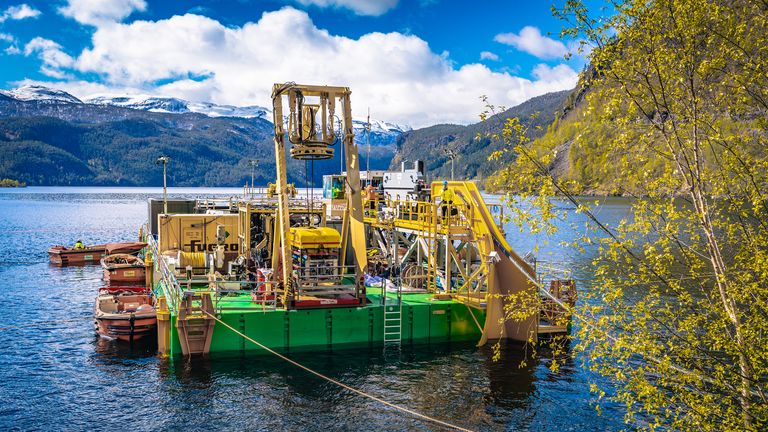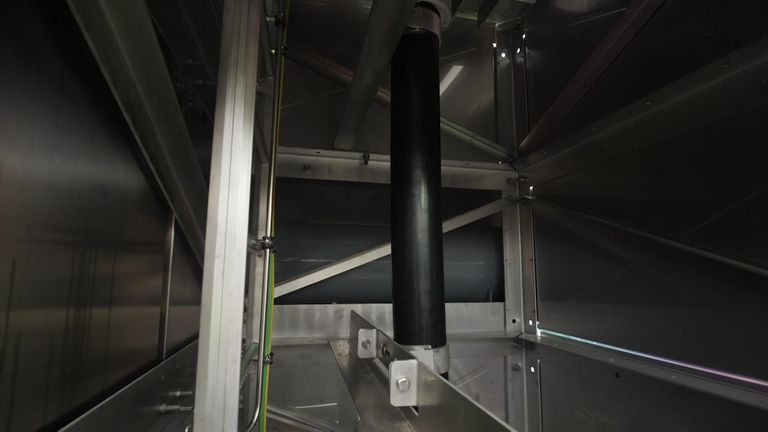The world’s longest under-sea power cables, stretching from Norway to Northumberland, should reduce the UK’s carbon emissions as well as customer bills, according to experts.
The 450-mile-long North Sea Link connects the UK to Norway’s power grid, which is almost entirely sourced from clean hydro-electricity.
From today, two parallel cables will carry 1,400 megawatts – enough electricity to power 1.4 million UK households.
Sky News was given exclusive access to the site where the interconnector starts its journey at Norway’s largest hydropower station in Kvilldal, a tiny village north of Stavanger.
In a helicopter we flew above the route of the high-voltage cables as they snake through valleys, pass through mountains and plunge up to 600 metres beneath lakes and fjords, out towards the open sea.
They come ashore in the UK near Blyth.
The joint venture between the UK’s National Grid and Norway’s power operator Statnett took six years and £1.4bn to build.
Nicola Medalova, the director of interconnectors for the National Grid, said it was a major milestone in the UK’s move towards net-zero.
“This cable, like other interconnectors, will allow us to access different types of energy from all over Europe.
“There is renewable energy that we can import to the UK to reduce our carbon footprint and reduce the cost of energy for UK customers.”
It’s estimated that the interconnector will lower the UK’s carbon emissions by 23 million tonnes between now and 2030 as it reduces the need to resort to fossil fuel power stations when the output drops from wind and solar farms.
In effect Norway will act as an enormous green stand-by battery for Britain.
The North Sea Link is the UK’s fifth interconnector. Other cables are already plugged into electricity networks in France, Belgium, and the Netherlands. Another is being built to Denmark.
They allow electricity to be bought at the lowest price across a vast area.
That flexibility will be increasingly important as Europe moves away from fossil fuel.
Last year a quarter of the UK’s electricity came from wind power.
But an unusually calm summer led to a sharp drop in the amount being generated, just as the price of gas on the global market spiked.
“We have been vulnerable to gas prices,” said Ms Medalova.
“But the more interconnectors we have, the more we can diversify our energy portfolio.
“We forecast that 90% of the energy coming into the UK from our interconnectors will be renewable by 2030.
“That makes us much less dependent on gas markets.”
Norway is one of the world’s largest producers of oil and gas. But around 93% of its domestic power, including home heating, is generated from water.
Its steep valleys and abundant rainfall are perfect for hydro-electricity. Water collected in huge reservoirs is fed through pipes that plunge downhill, turning powerful turbines.
But Thor Anders, the director of the Norwegian side of the project, said occasional dry years reduce the amount of water available for electricity generation.
“The match between hydropower and wind power is intriguing,” he told Sky News.
“When the UK has a challenge with too little wind, we can support you with hydropower.
“And when you have excess wind, we can import it and we don’t have to use up the water in our reservoirs. We can save it.
“It’s a match that’s good already and it’s going to get even better as renewables develop in future.”
Source: Read Full Article
